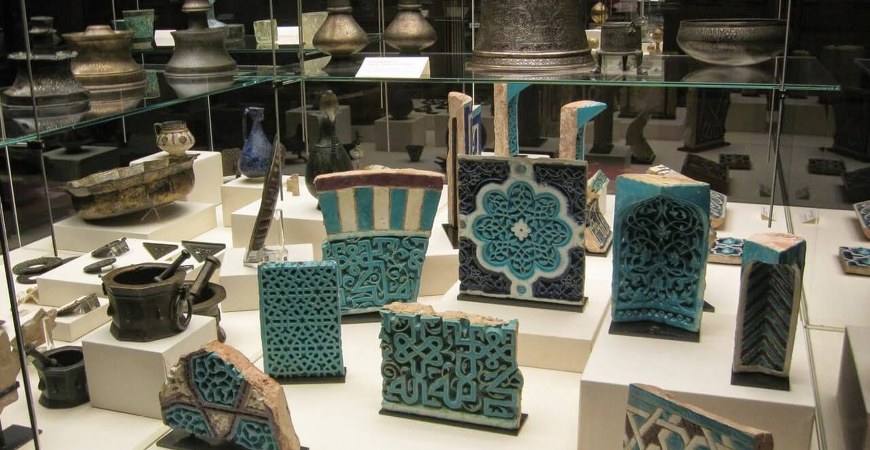Karatay Medrese & Ceramic Museum,
In 1955 the Karatay Medrese in Konya, which was built during the Seljuk period, was repaired and turned into the Ceramic Museum. The Karatay Medrese was built in 1251 by the Seljuk Emir Celaleddin Karatay. It has a beautiful portal made of sky and white marble. The portal leads into a formerly domed entrance from which you enter the Medrese. Wall tiles and porcelain dishes from the Seljuk, Beylik, and Ottoman periods are exhibited in cases in the hall, exedra and in the recently restored vaulted and domed students’ rooms of the Medrese:
1 — Seljuk period wall tiles: Wall tiles from Seljuk buildings in Kon-ya are exhibited in showcases to the right of the entrance. Turquoise six-sided tile panels were taken from the Nalinci Baba (Nizamiye) Medrese in Kon-ya (XIII century), examples of mosaic wall tiles, and carved, damascened and relief tiles with both motifs and inscriptions, make up a rich collection of titles.
2 — Seljuk Palace Tiles: In 1941 excavations in the neighborhood of the Seljuk Palace situated on the northern slope of Alaeddin Hill in Konya, which is thought to have been built by Sultan Kilic Arslan II (1156-1192), uncovered remains of the tiles which had decorated the walls of the Palace. Among them are over glazed tiles, most of them gilded, with figures and designs.
3 — Porcelain: As well as Seljuk porcelain lamps, plates, jugs etc. there are two separate collections of turquoise and cream colored Seljuk plates and dishes. There is also Seljuk and Ottoman porcelain in the wall niches and wall panels.
4 — Kubababad Palace wall tiles: The best examples of wall tiles in the museum are those from Kubadabad. Kubadahad is situated on the western shore of Beysehir Lake, near the present village of Hoyran. This palace was built in this beautiful spot by the Seljuk Sultan Alaeddin Keykubad I, who had the walls decorated with tiles showing pictures, designs and inscriptions. The tiles were found during excavations in 1949, and from 1965 to 1967. The tiles are decorated with Seljuk motifs and inscriptions, and pictures of people and animals in various colors in the luster and underglaze techniques, and are in the shape of crosses, half crosses, octagons, stars, and squares. Bowls and dishes, glass and metal items and stucco decorations etc. which were found along with the tiles are also on exhibit. The Kubababad Tiles are the finest examples of representational Turkish tiling.
5 — Tiles from the Beylik and Ottoman periods: In the other showcases of the hall of the Medrese are examples of Turkish tiling illustrating Its development after the Seljuk period.



































































































































